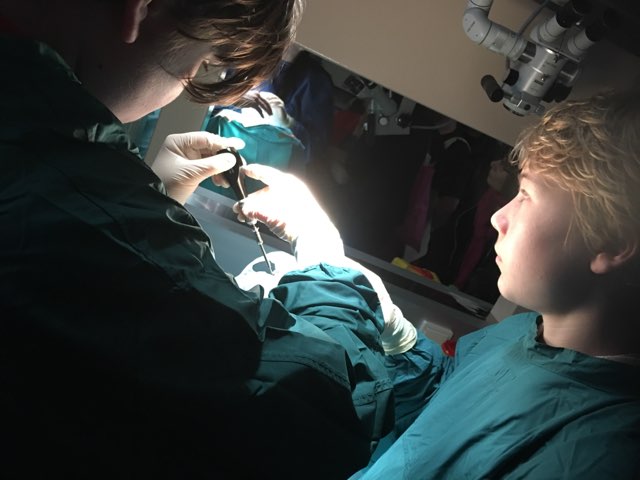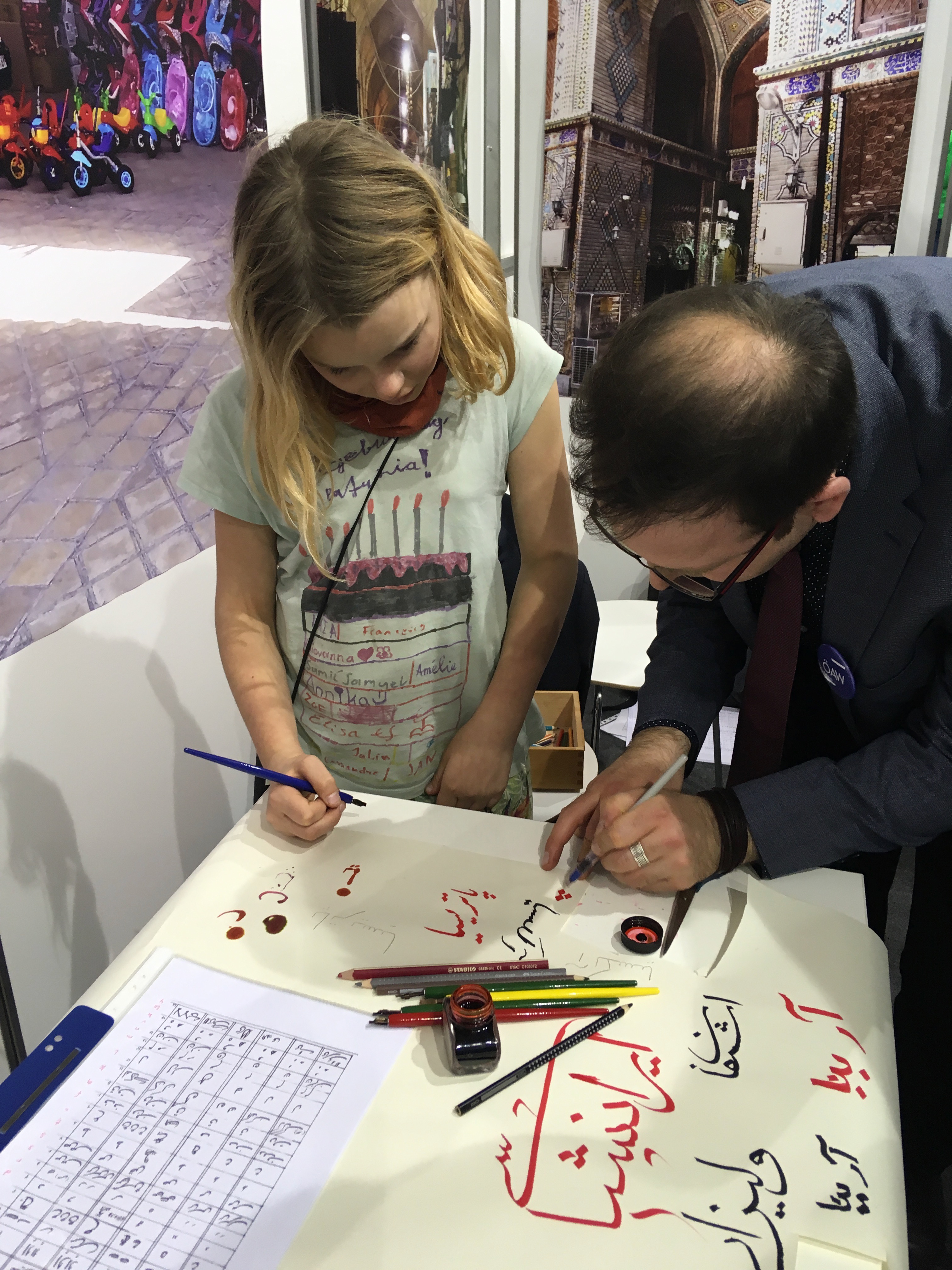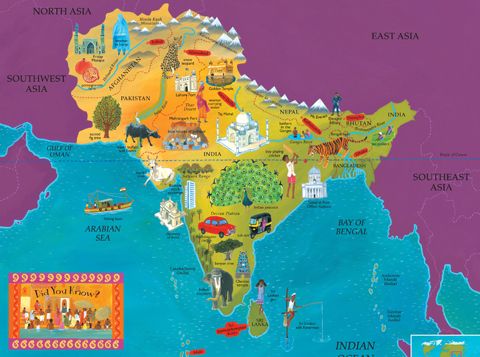Two days ago I visited a part of the “Long night of research”, an event having the purpose of presenting research to the public. Universities, the academy of sciences and various private funds supporting scientific research (like the Rotary club) had a small portion of an open space to present their highlights. The idea is that people just stroll from one location to the other and spend only some minutes in each. Thus, an effective communication needs to be essential, catchy and striking enough to mould the audience’s memory.
The public included many children and their parents. It goes without saying, I guess, that the institutes focusing on natural sciences were way more successful in gaining the attention of young visitors. In the photograph, you can see two 13 ys old boys operating a fake brain.
What about the presentations focusing on humanities?
Some had the great idea of combining children activities with things which could have been more interesting for their parents. For instance, while children were busy looking for fragments of manuscripts in the Playmobile reconstruction of an ancient city and then had to put the pieces of the puzzle together, the parents could read posters or discuss with experts in the same area. Another very cool idea was to give children lego-building blocks to reconstruct archeological models. In another location, children could learn to write in foreign writing systems with ancient writing tools. Their parents could meanwhile use a lens and try to detect the same signs in the reproduction of an ancient scroll
This hands-on approach is, I believe, very promising. If we just offer more to read to the public, there will be no point in coming to such events (since there is enough stuff to read on internet). Rather, we should be able to make people interested by showing, e.g., what it means to work on a manuscript and try to decipher it.
I, for one, noticed that many people would have liked to learn more about blockprint in Tibet —perhaps one could bring a couple of small models and let visitors try them?
One thing which is really a must, is a geographic map. It really helps locating ideas and understanding contacts and influences. In the case of India, current political maps might be misleading, so that one might prefer a geographical one (or a children-friendly one, like the one below, which I found on Pinterest).
Have you ever been to similar events? What works with you as part of the audience? What could one offer?




At the University of Alberta, we have an annual “Three Minute Thesis” for grad students. It is and exciting and enjoyable occasion and by all accounts the participating students find it highly valuable.
More information here:
https://www.ualberta.ca/graduate-studies/professional-development/events/3minute-thesis/what-is-a-three-minute-thesis
Thank you Dominik, it looks like a very nice idea. Do “normal” (=unrelated to the university) people also attend?
Hi, Elisa.
The kids are cool!
As for your question, I really wonder how to make textual research attractive for the public (unless you decipher the Maya script etc.)
Such events as Nacht der Forschung, Night of Museums, a Week of Museum Quests in the school holidays etc. are indeed good for the popularization of research. But in case of kids and teens a real motivation can be brought up with some regular courses held by professionals. I was 11 when started attending courses for children in the Hermitage museum and I spent 6 years there. And this was one of the reasons why I chose indology at the university.
Dear Evgenija,
may I ask which kind of courses you attended at the Hermitage Museum (for six years)? How often were classes? On what topics? Who paid for them (I do not need the details and would just like the know whether they were state-funded or not).
Dear Elisa,
excuse me for the delay in answer.
The classes were once a week. First three years the topics were parallel to the school programme in history, so that in the first year we studied history and art of the Ancient Egipt, Middle East, Greece and Rome, in the second year – the Middle Ages in Europe and in the third year – Russian art. The next three years one could choose to study either European art and culture, or archeology or Oriental art. The classes were held by the research stuff of the Hermitage. Sometimes the were held at the exhibitions, sometimes in the classrooms where the slides were demonstrated.
The classes were free. Particularly these classes, I think, are supported by the Hermitage. But since USSR we have a large system of additional education for children in special state-funded centers, where the courses are usually free and are held on quite high level. So, at least in St. Petersburg the kids who are interested in some sciences or humanities can get a good regular training.